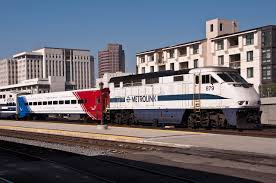Bridging the Past and Present
As one wanders through the bustling corridors of Union Station in Toronto, it’s easy to feel the weight of history—the edifice itself has been a witness to the evolution of the city since it first opened its doors in 1927. Now, with significant renovations aimed at enhancing its operational capacity and cultural offerings, Union Station represents not only a critical transit hub but also a potential model for community engagement in urban life.
A Transformation Underway
The ambitious redevelopment project, which has been a topic of discussion for over a decade, seeks to modernize Union Station while preserving its architectural integrity. Recent enhancements have included improved passenger amenities, expanded concourses, and upgraded bathroom facilities. Additionally, the station is now hosting unique pop-up shops and local art exhibits, transforming transit stops into vibrant community experiences.
As urban planner Sarah Thompson aptly stated, “Union Station should be more than a pit stop; it must become a community gathering space for Torontonians and visitors alike.” This sentiment is echoed by the increasing foot traffic data indicating a 40% rise in visitors since the renovations began. Rather than merely a terminal for trains and subways, it is fast becoming a cultural landmark that reflects the city’s diversity.
Public Sentiment and Social Reactions
Social media sentiment surrounding the changes at Union Station has been overwhelmingly positive, with users praising the new installations and the vibe of the building. A recent tweet from a local user read, “I just had my coffee at the new bar in Union Station—what a great place to catch my train! It feels more alive than ever!” This enthusiastic response suggests that the transformation is resonating well with locals who are eager to embrace a more inclusive destination.
Economic and Social Implications
The economic ramifications of revitalizing Union Station can’t be overlooked. As the hub attracts more visitors, local businesses, cafes, and shops are enjoying increased patronage, contributing positively to the local economy. Furthermore, as diversity in offerings grows—from art installations to local food choices—there’s a potential for fostering community ties that are often strained in densely populated urban areas.
Furthermore, the station stands to redefine urban transit culture in Canada. By making Union Station more appealing, planners hope to encourage public transit usage, which can relieve congestion on the roadways and align with the city’s sustainability goals.
The Road Ahead
Looking into the future, the journey of Union Station is akin to the changing tides of Toronto itself—ever-evolving and reflective of its people. With city planners and local councils committed to not just enhancing transit but also creating a shared civic space, the implications stretch far beyond transportation. Instead, Union Station is poised to become a testament to how urban spaces can thrive when they prioritize inclusivity and community identity.
As work continues, it’s clear that Union Station is more than just a physical space; it’s the intersection where history, modernity, and community spirit converge—one that Torontonians are proud to call their own.
